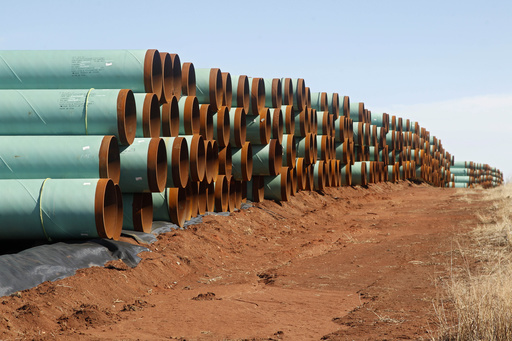BISMARCK, N.D. (AP) — Two Native American tribes who are suing to stop the Dakota Access pipeline have asked a judge to head off the imminent flow of oil while they appeal his decision allowing the pipeline’s construction to be completed.
U.S. District Judge James Boasberg last week rejected the request of the Standing Rock and Cheyenne River Sioux tribes to stop construction of the final segment of the pipeline under Lake Oahe, a Missouri River reservoir in North Dakota from which the tribes get their water. The pipeline’s developer, Texas-based Energy Transfer Partners, expects to have the work done and the pipeline filled with oil as early as this week.
The tribes maintain that an oil pipeline under the lake they consider sacred violates their right to practice their religion, which relies on clean water. In his decision last week, Boasberg said the tribes didn’t raise the religion argument in a timely fashion and he questioned its merits.
Cheyenne River attorney Nicole Ducheneaux on Friday appealed the ruling to the U.S. Court of Appeals for the District of Columbia Circuit. She also asked Boasberg to “prevent the flow of oil through the Dakota Access pipeline” until the appeal is resolved.
“Should construction continue during the appeals process, the last opportunity for Cheyenne River Sioux Tribe to defend its tribal members’ free exercise of religion will be lost,” Ducheneaux wrote.
Boasberg on Monday gave ETP and the Army Corps of Engineers until Tuesday to file their responses to the request. The Corps is a defendant in the lawsuit because it manages the Missouri River system and authorized the Lake Oahe work last month at the urging of President Donald Trump.
Government attorneys didn’t immediately respond to a request for comment Monday. ETP spokeswoman Vicki Granado declined to comment, citing the ongoing legal case.
The 1,200-mile pipeline would transport oil from North Dakota through South Dakota and Iowa to a shipping point in Illinois.
The tribes filed their lawsuit last summer, after which hundreds and sometimes thousands of pipeline opponents began camping on federal land near the Lake Oahe drill site. Many clashed with police, resulting in about 750 arrests from August to late February, when the main camp and two others were shut down in advance of spring flooding season.
A Corps contractor late last week finished cleaning up the camps, Corps Capt. Ryan Hignight said Monday. A total of 835 industrial-size trash bins were filled and removed. An unknown amount of material such as lumber and propane tanks was set aside for reuse or recycling.
“After the spring thaw, fencing will be put back up out there, like was there originally, and the land will have to be regraded and reseeded so we can get grass cover,” he said.
The total cost of the operation isn’t tallied yet, but the Corps has said it could cost taxpayers more than $1.1 million.
___
Follow Blake Nicholson on Twitter at https://twitter.com/NicholsonBlake
Copyright 2017 The Associated Press. All rights reserved. This material may not be published, broadcast, rewritten or redistributed.






